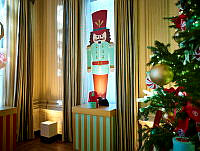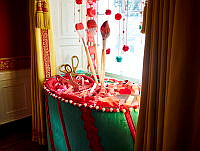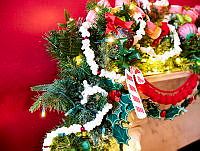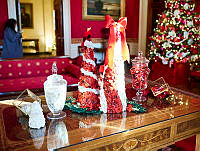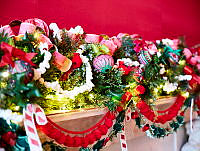Abigail Adams

Abigail Smith was born in Weymouth, Massachusetts, on November 11, 1744. Her parents, Reverend William Smith and Elizabeth Smith, provided her with some instruction but she did not receive a formal education.1 On October 25, 1764, Abigail married John Adams, and the newlywed couple moved into his family home in Braintree (now Quincy), Massachusetts. They had six children together but only four reached adulthood – Abigail, John Quincy, Charles, and Thomas.
John’s law career, service in the Continental Congress, and diplomatic missions abroad kept him away for long periods of time. As a result, many of the daily and household responsibilities were Abigail’s. She raised, nurtured, and educated their children, oversaw the Adams farm and its tenants, and managed the family’s finances and investments. She also provided critical support to John throughout his journey to the presidency, including organizing significant household moves to France, England, New York, Philadelphia, and Washington, D.C.
Because of their frequent separation, John and Abigail shared an extensive and wide-ranging correspondence consisting of more than 1,100 letters.2 The couple discussed a variety of topics such as politics, diplomacy, war, and public opinion. Their letters reflect a deep, intellectual and emotional affection for one another, underscored by Abigail’s directness and candor. In 1776, she famously instructed her husband to “Remember the Ladies, and be more generous and favourable to them than your ancestors. Do not put such unlimited power into the hands of the Husbands. Remember all Men would be tyrants if they could.”3
Abigail Adams believed that women were entitled to the same rights as men for education, property, and protection under the law. While John did not take her suggestion seriously, he became more dependent on her counsel as he climbed the political ladder. After taking the oath as president, he wrote: “I never wanted your Advice and assistance more in my Life.”4 Abigail soon joined him in Philadelphia, where she hosted social events and used these occasions to garner support and, if need be, defend her husband’s policies.
While they were the first occupants, the Adamses only lived in the White House for several months. During that time, their son Charles died, and President Adams lost re-election. After leaving Washington, Abigail spent most of her time with her children, grandchildren, and friends, many of whom visited her at the Old House at Peace field. She also closely followed the career of her son John Qunicy Adams, though did not live to see him become president. She passed away on October 28, 1818, and was later entombed in the family crypt at United First Parish Church in Quincy.5
Footnotes & Resources
- “Abigail Smith Adams,” Adams Biographical Sketches, Massachusetts Historical Society, https://www.masshist.org/adams...
- Adams Family Papers, “About the Correspondence between John and Abigail Adams,” Massachusetts Historical Society, https://www.masshist.org/digit...
- Abigail Adams to John Adams, March 31, 1776, Massachusetts Historical Society, https://www.masshist.org/digit...
- John Adams to Abigail Adams, March 22, 1797, Massachusetts Historical Society, https://www.masshist.org/digit...
- National Register of Historic Places Inventory – United First Parish Church, http://npshistory.com/publicat...




















































